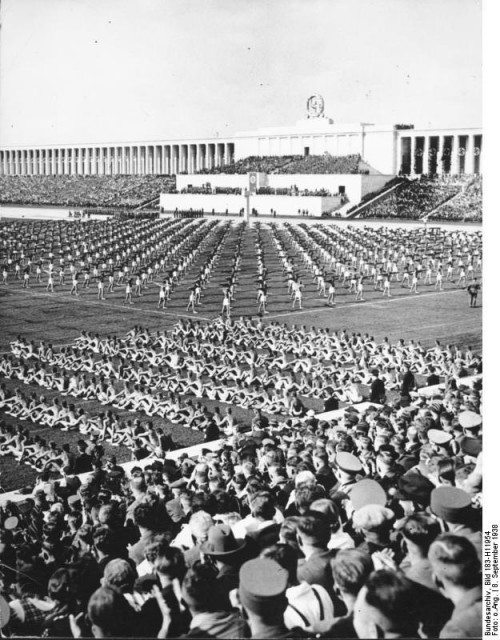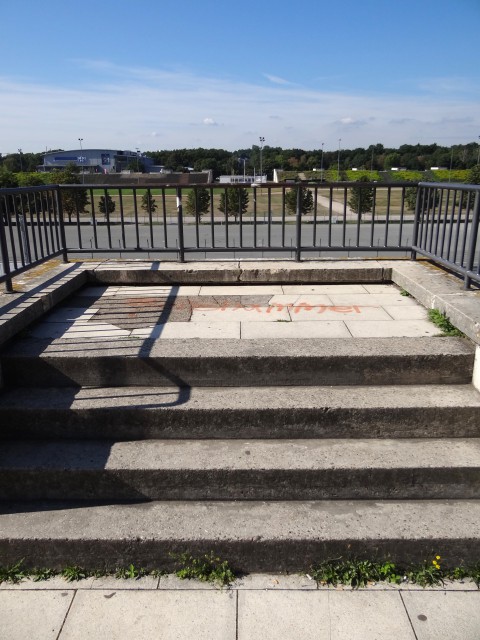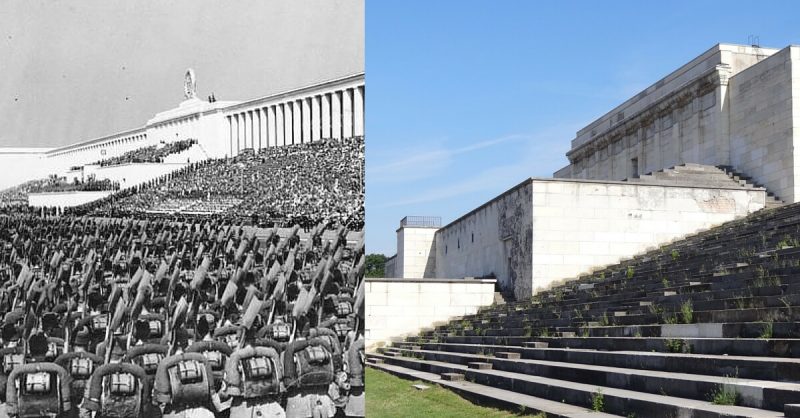Authoritarian States often use architecture to remind citizens of their relative insignificance, and of the might and grandeur of the State itself. The Romans did it, as did the Communist government in Russia – visit Moscow, and you’ll see wide avenues with huge civic buildings built to intimidate the ordinary people.
Beijing’s Tiananmen Square is bordered by enormous, imposing structures, adorned with the flags of the Chinese peoples’ republic. It is all very impressive and designed to remind the state’s citizens that as individuals they are insignificant in the overall scheme of things.
In 1933, Adolf Hitler decided that Nuremberg, situated on the Pegnitz River in Southern Germany, was to become the centre for Nazi party rallies, and he appointed Albert Speer, his favourite architect, to design a complex of buildings and areas covering 11 square kilometres of land.
The plan was an ambitious one, and some of the buildings would be grandiose in both design and purpose. The façade of the Congress Hall mimicked Rome’s Coliseum, and the structure was intended to allow 50,000 people to assemble under one unsupported roof span.

It was never completed, but it remains as a monumental reminder of the sheer arrogance of a regime which believed its leader was ordained by providence to restore Germany to glory.
Other buildings on the site are familiar to anyone who has seen footage of the huge rallies at which Hitler propounded his anti-semitic policies, often to the sound of Wagner’s stirring overtures. The rallies were designed as showcases for the Nazi party and were carefully choreographed.
Up to a million people would flock to Nuremberg in September each year to witness Nazi leaders making speeches, and goose-stepping soldiers parading with swastika banners flying. At night, the Zeppelinfeld arena, which could hold 200,000 people, would be bathed in the light from huge floodlights accentuating the monolithic splendour of the buildings.

The arena still stands, but is now in a state of disrepair, and is closed to public access. Controversy rages over its future. The Mayor of Nuremberg, Ulrich Maly, wants to launch a major restoration project costing over 80 million Euros but there is fierce opposition; Professor Norbert Frei, of Jena University, believes the site is contaminated with the memories of Nazi philosophies, and should be left to crumble away gradually.
A conference of European history experts failed to reach agreement on the site’s fate, but they said that none of the buildings that were destroyed at the end of the war should be replaced.
